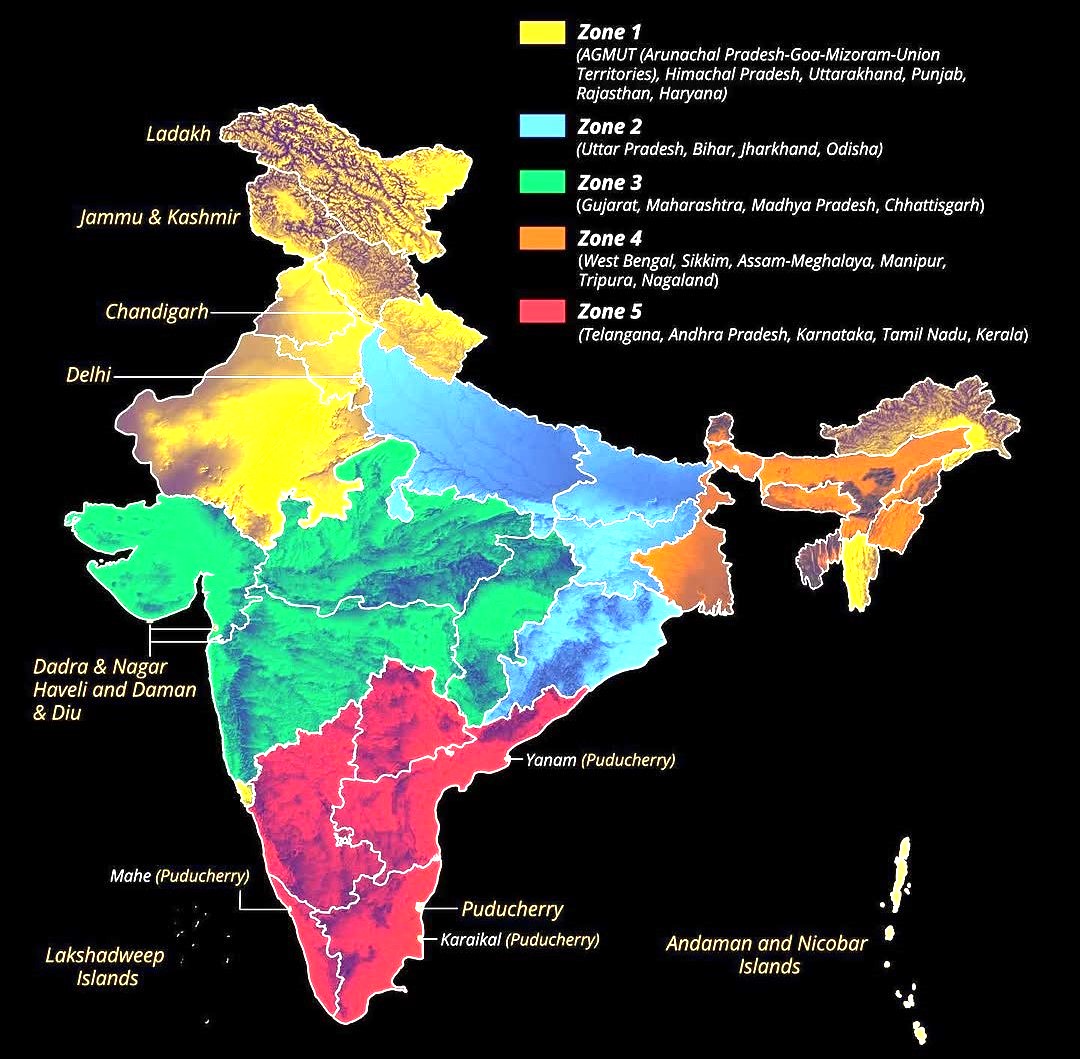The Indian Administrative Service (IAS) cadre system forms the backbone of public administration in India, ensuring that IAS officers serve across various states and Union Territories to maintain effective governance. The cadre system represents the balance between the federal and unitary principles of the Indian Constitution, allowing the central government to deploy IAS officers while keeping them rooted in their assigned states.
In this detailed guide, we delve into the intricacies of the IAS cadre system, focusing on its allocation policy, the challenges officers face, and the opportunities it presents.
What is the IAS Cadre System?
The IAS cadre system governs how IAS officers are allocated to specific states or joint state groups, referred to as cadres. It ensures that governance at both the state and national levels benefits from a pool of trained administrators.
Key Features:
- State Cadres: Each officer is assigned to a particular state or Union Territory (UT) cadre where they serve for most of their career.
- Central Role: Officers are also available for deputation to the central government, serving in various ministries or organizations for a specific period.
- Joint Cadres: In certain cases, smaller states and Union Territories are grouped into joint cadres, such as the Arunachal Pradesh-Goa-Mizoram-Union Territories (AGMUT) cadre.
IAS Cadre Allocation Policy
The allocation of cadres has undergone multiple revisions to ensure transparency, diversity, and fairness. The most recent Cadre Allocation Policy (2017) introduced a zonal system that governs how candidates are assigned to their cadres.

1. Zonal System:
States and Union Territories are divided into five zones, and candidates must indicate their preferences for cadres within these zones. This ensures geographic diversity and reduces the concentration of officers in particular states.
Zones and State Cadres
| Zone | State Cadres |
|---|---|
| Zone-I | AGMUT (Arunachal Pradesh, Goa, Mizoram, Union Territories), Himachal Pradesh, Uttarakhand, Punjab, Rajasthan, Haryana |
| Zone-II | Uttar Pradesh, Bihar, Jharkhand, Odisha |
| Zone-III | Gujarat, Maharashtra, Madhya Pradesh, Chhattisgarh |
| Zone-IV | West Bengal, Sikkim, Assam, Meghalaya, Manipur, Nagaland, Tripura |
| Zone-V | Telangana, Andhra Pradesh, Karnataka, Tamil Nadu, Kerala |
2. Preference System:
Candidates are required to list their cadre preferences as follows:
- Select one cadre from each zone.
- Indicate an overall order of preference across zones.
- Indicate their home state preference if desired (though allocation to the home cadre is rare).
3. Allocation Criteria:
The final cadre allocation is determined based on:
- Rank in the UPSC Civil Services Examination.
- Candidate preferences.
- Availability of vacancies in each cadre.
4. Home Cadre Policy:
- Preference for a home cadre is considered but is typically granted only in exceptional cases.
- This policy prevents bias and ensures that officers remain neutral in their service.
5. Reserved Categories:
Candidates belonging to SC/ST categories may be allocated to their home cadre to meet specific reservation requirements.
6. Deputation Policies:
Officers can opt for deputation to the central government or other states after serving a specified period in their allotted cadre.
Challenges of the IAS Cadre System
While the cadre system ensures equitable distribution of IAS officers, it also poses significant challenges:
1. Adjusting to a New Environment:
- Officers are often assigned to states with unfamiliar languages, cultures, and administrative systems.
- Understanding local governance issues and establishing rapport with the local populace can be daunting.
2. Remote and Underdeveloped Areas:
- Many officers are posted in remote or conflict-prone regions, which may lack basic infrastructure and amenities.
- The responsibility to implement government schemes in these areas can be physically and emotionally taxing.
3. Political Pressures:
- In certain states, officers face intense political interference, which can hinder independent decision-making and administrative efficiency.
4. Language Barriers:
- Officers may need to learn regional languages to effectively communicate with local officials and citizens.
5. Unequal Cadre Preferences:
- Some states, particularly northeastern states, receive fewer cadre preferences from candidates, leading to challenges in maintaining administrative balance.
Opportunities in the IAS Cadre System
Despite its challenges, the IAS cadre system provides immense opportunities for personal and professional growth:
1. Exposure to Diversity:
- Officers gain firsthand experience in dealing with diverse cultures, governance challenges, and socio-economic issues.
- This diversity enriches their administrative capabilities and broadens their perspective.
2. Leadership in Nation-Building:
- Officers posted in underdeveloped or challenging regions have the opportunity to make a significant impact by implementing developmental programs.
3. Career Growth through Deputations:
- Officers can serve at the central government level or work with international organizations, expanding their career horizons.
- Deputations provide exposure to global governance and policy-making practices.
4. Cultural and Social Immersion:
- Living and working in different regions fosters adaptability, resilience, and cross-cultural understanding.
Special Cases in Cadre System
1. Inter-Cadre Transfers:
- Officers can request a transfer to another cadre in exceptional circumstances, such as:
- Marriage: If two IAS officers from different cadres marry, they may request a common cadre.
- Extreme Personal Hardship: Requires approval from the central and state governments.
2. AGMUT Cadre:
- Officers in the AGMUT cadre serve across multiple Union Territories and states, offering a unique multi-regional experience.
Cadre System in Action: Examples of Leadership
Several IAS officers have excelled in their cadres, overcoming challenges to deliver exemplary governance:
- Dr. S. M. Vijayanand (Kerala Cadre): Played a key role in rural development and decentralization.
- Durga Shakti Nagpal (Uttar Pradesh Cadre): Known for her courage in tackling illegal mining.
- Ritu Maheshwari (Punjab Cadre): Led significant urban development projects.
Conclusion
The IAS cadre system exemplifies India’s federal structure by balancing state and central governance roles. While the allocation policy may appear complex and sometimes challenging, it offers IAS officers unparalleled opportunities to serve diverse communities and make a difference in public administration. Aspiring IAS officers should view the cadre system not just as an assignment but as a gateway to nation-building and leadership.
FAQs: IAS Cadre System
The IAS Cadre System assigns IAS officers to specific state or joint state cadres, where they work throughout their careers, except during deputations to the central government or international organizations.
Cadres are allocated based on the “Roster System,” which considers the rank obtained in the UPSC exam, the candidate’s preferences, and the availability of vacancies in a particular cadre.
The five zones are:
Zone I: Northern India (e.g., Himachal Pradesh, Punjab, Uttarakhand).
Zone II: Central India (e.g., Uttar Pradesh, Bihar, Jharkhand).
Zone III: Western India (e.g., Gujarat, Maharashtra, Rajasthan).
Zone IV: Eastern and Northeastern India (e.g., West Bengal, Assam, Sikkim).
Zone V: Southern India (e.g., Tamil Nadu, Kerala, Karnataka).
Candidates provide their preferences for cadres within a zone. However, the final allocation depends on rank, vacancies, and roster considerations.
Candidates must be Indian citizens, hold a graduate degree, and fall within the specified age limits (21–32 years for the general category, with relaxations for other categories).
An inter-cadre transfer allows an officer to move to another cadre under exceptional circumstances, such as marriage to an officer of a different cadre or compelling medical reasons.
After training at the Lal Bahadur Shastri National Academy of Administration (LBSNAA), officers are allocated to their respective cadres through a process involving preferences and government discretion. Factors considered include regional balance, administrative needs, and the officer’s preferences (though these are not always guaranteed).
The AGMUT (Arunachal Pradesh-Goa-Mizoram and Union Territories) cadre offers postings across multiple states and Union Territories, providing a dynamic and varied work environment.




